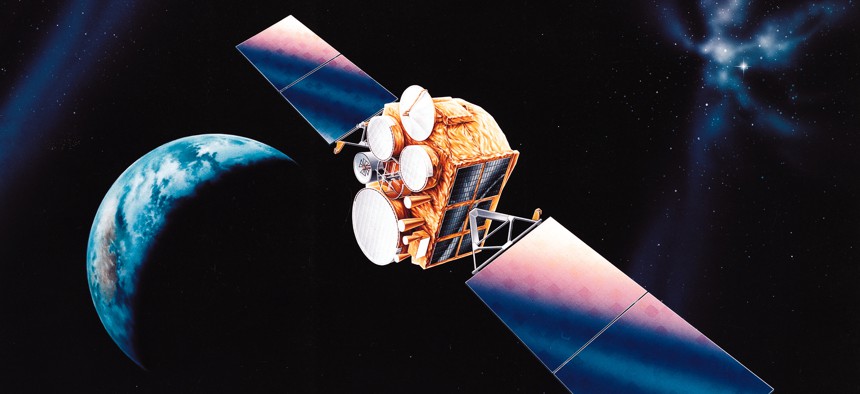
A Defense Satellite Communication System satellite. U.S. Air Force
Private Equity Firm Acquires Geost, Whose Sensors Protect Satellites
It’s a play to capitalize on massive satellite orders from the Pentagon.
New York-based ATL Partners has acquired Geost, a small Arizona firm that makes sensors that can watch and protect satellites from threatening spacecraft.
Firm officials called it the first in a coming series of investments in a market that’s expected to grow exponentially as the Pentagon puts thousands of small satellites into orbit in coming years.
“They [Geost] really punch above their weight with their technology and their capabilities and their customer set,” said Michael Kramer, a principal with the ATL Partners. “You look at what they do—they're competing with Raytheon, they're competing with General Atomics—and they're a small company. We're really excited to partner with them, but then take them to the next level.”
The terms of the deal were not disclosed.
Discussions between the two companies began late last year when ATL was introduced to Josh Hartman, a former deputy assistant defense secretary for space and intelligence, who was hired by Geost two years ago as vice president.
Since Hartman arrived, the company has more than tripled its revenue, and plans to continue its growth in coming years.
“The growth that we're experiencing has to do with this larger market play that's going on,” Hartman said in an interview.
ATL is planning to grow Geost through both investments and acquisitions. They’re envisioning new production facilities, hiring more engineers and increasing the company’s internal research and development budgets.
“We want to do a lot of really strategic, targeted, bolt on acquisitions,” Kramer said. “We want to think about expanding our product capabilities into complimentary adjacencies.”
One technology of interest for the private equity firm is payload processing.
Among Geost’s products are small cameras and other types of sensors that can detect approaching satellites, space debris and other objects. The technology could allow the military to take defensive actions, such as repositioning the satellite, if a threat is detected. The company’s sensors for large satellites are about one foot by one foot, but its smaller sensors for lower-flying satellites can fit in your hand. Hartman said about 50 of the company’s sensors could protect a 150-satellite constellation.
“They're a company that has a high degree of differentiation with their technology,” Kramer said. “When they're putting together sensors for space domain awareness, their ability to produce these sensors, at a much lower size, weight and power plus price is very important when you think about where the procurement efforts in [the] Space Force and Air Force are going.”
Hartman said Geost is uniquely positioned because it specializes in the smaller sensors needed for smaller satellites. Its larger competitors have focused on building bigger sensors for bigger satellites.
“They've never had to build small payloads and they've never had to build small payloads at scale,” he said. “They've got an infrastructure and a design philosophy that's oriented around building refrigerators. Somehow, they need to figure out how to build toasters. We have been building toasters for the last 16 years because that in the classified space, that's what we were asked to do.”
Geost, which provides some of its products to the Pentagon and intelligence community, partners with larger defense primes, including Northrop Grumman and L3Harris Technologies.
The Pentagon and Space Force are at the beginning of an expected satellite shopping spree as they build constellations of new spacecraft to augment larger, higher flying and more expensive satellites. These constellations, many anticipated to have hundreds of satellites each, will need small payloads.
The Pentagon has been increasingly concerned about Russian spacecraft maneuvering close to U.S. satellites. Geost’s technology could give people on the ground a better picture of what’s happening high above the Earth.
“Our products are much more in demand than they were,” Hartman said. “We think that's only going to accelerate.”




